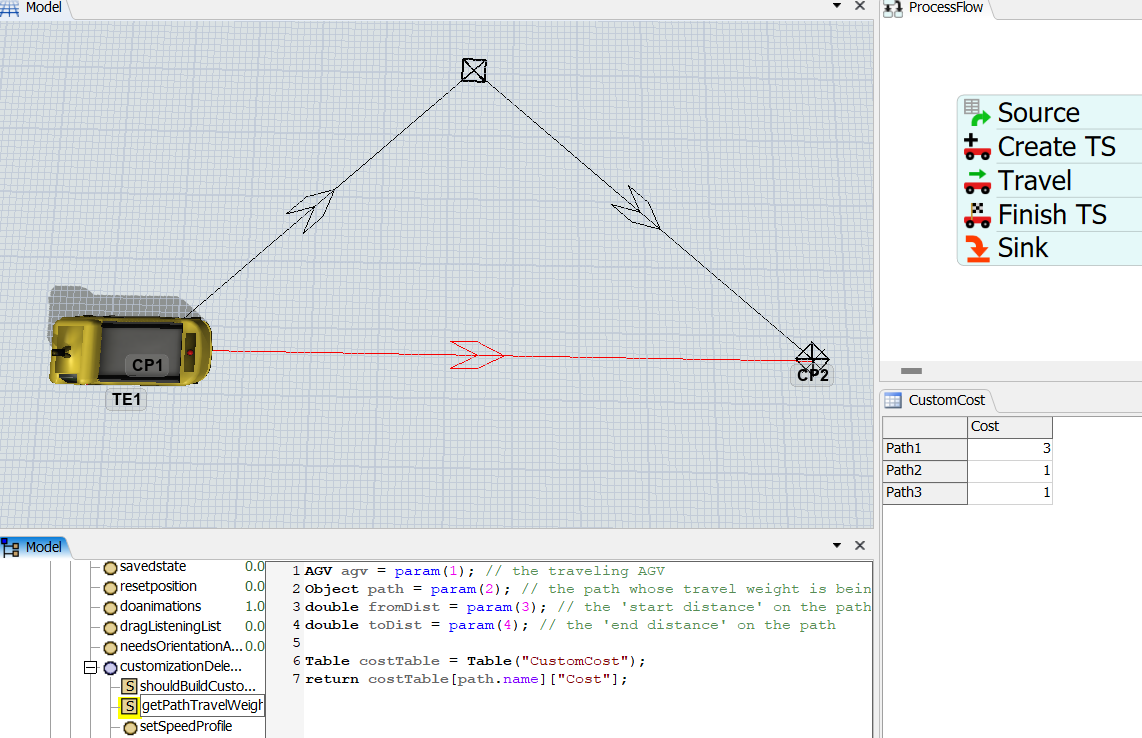
In the attached model, I am trying to use the AGV Customization Delegate to set cost on each path.
In the getPathTravelWeight hook, cost is defined by referencing a global table.
If the red path (path1) is used, the total cost is 3, and if the black paths (path2 and path3) are used, the total cost is 2, so I assume the AGV will choose the black paths, but when I run the simulation, the red path is used.
If the cost of path1 is set to 4, the black paths are used.
Please let me know if there is any mistake in the AGV Customization Delegate settings in the model.
Thank you in advance.
